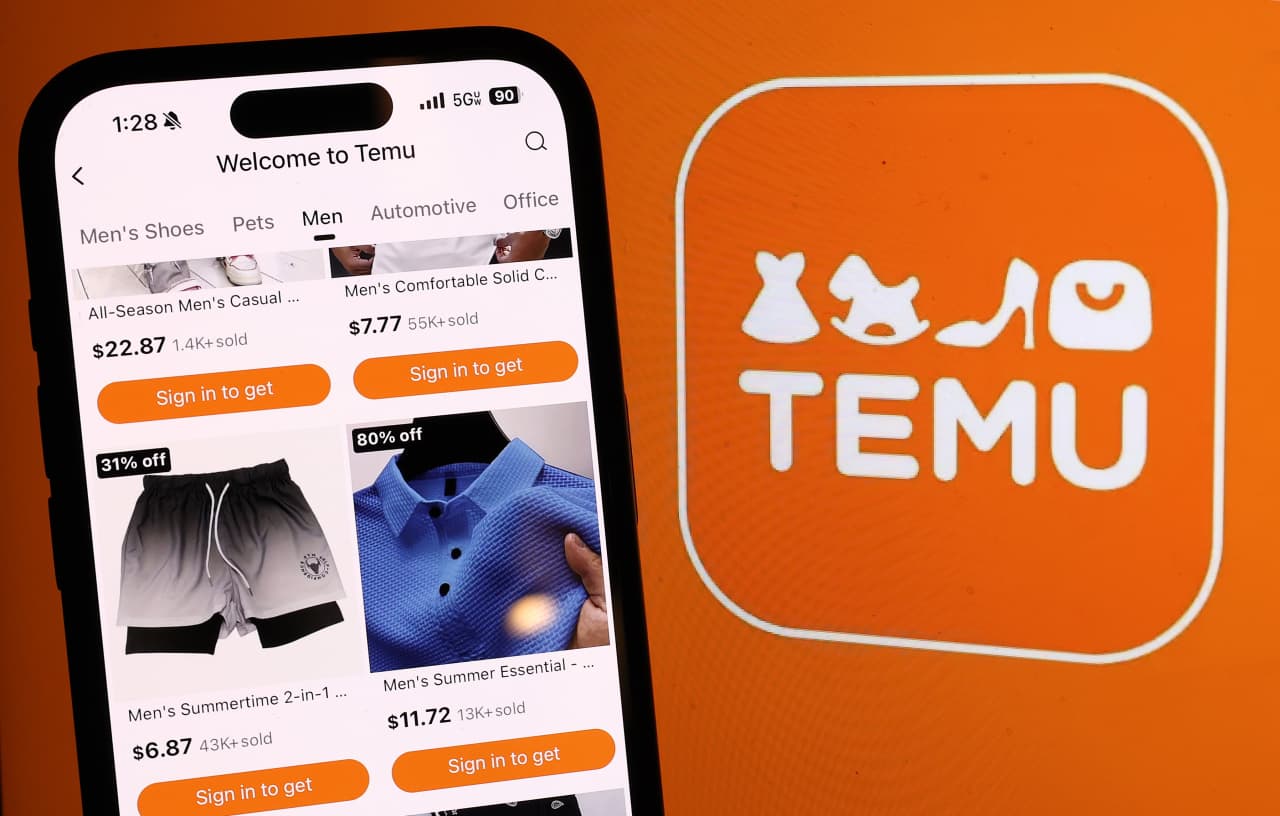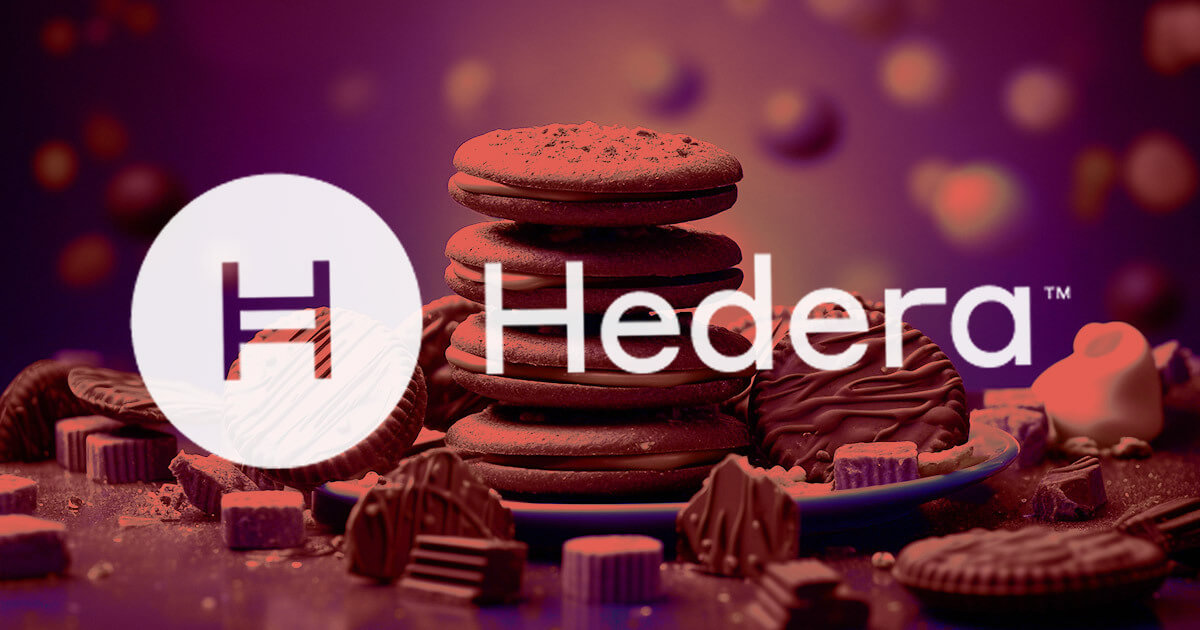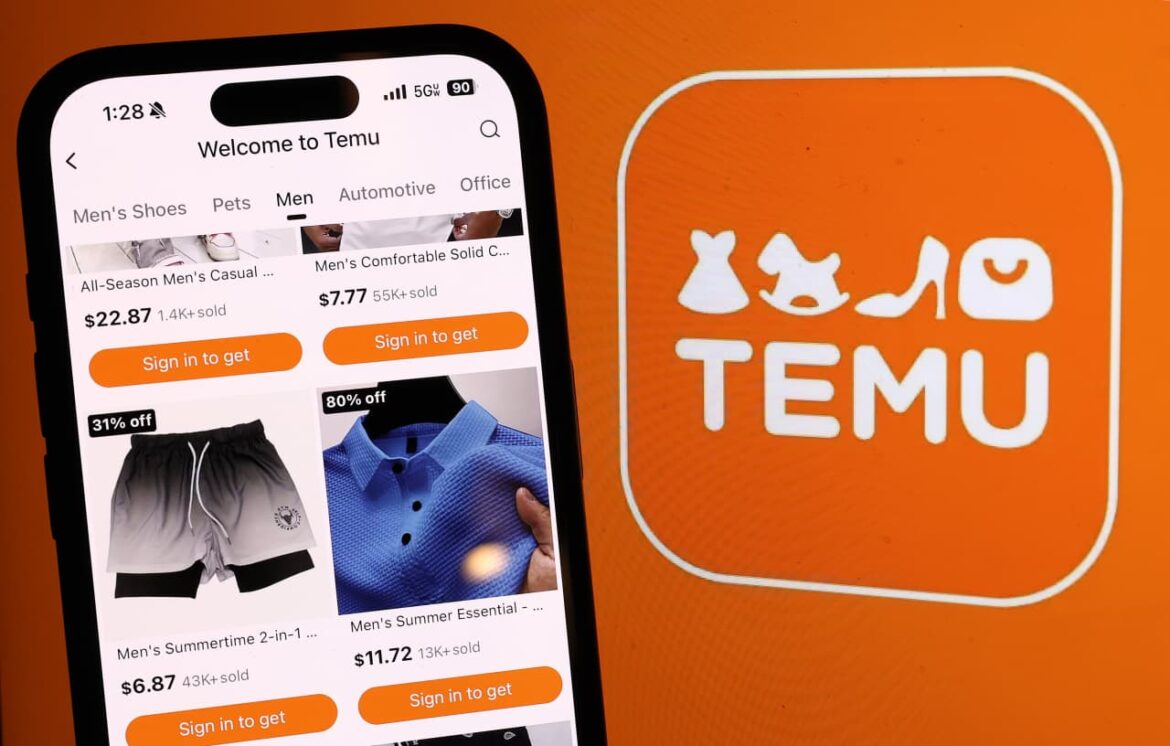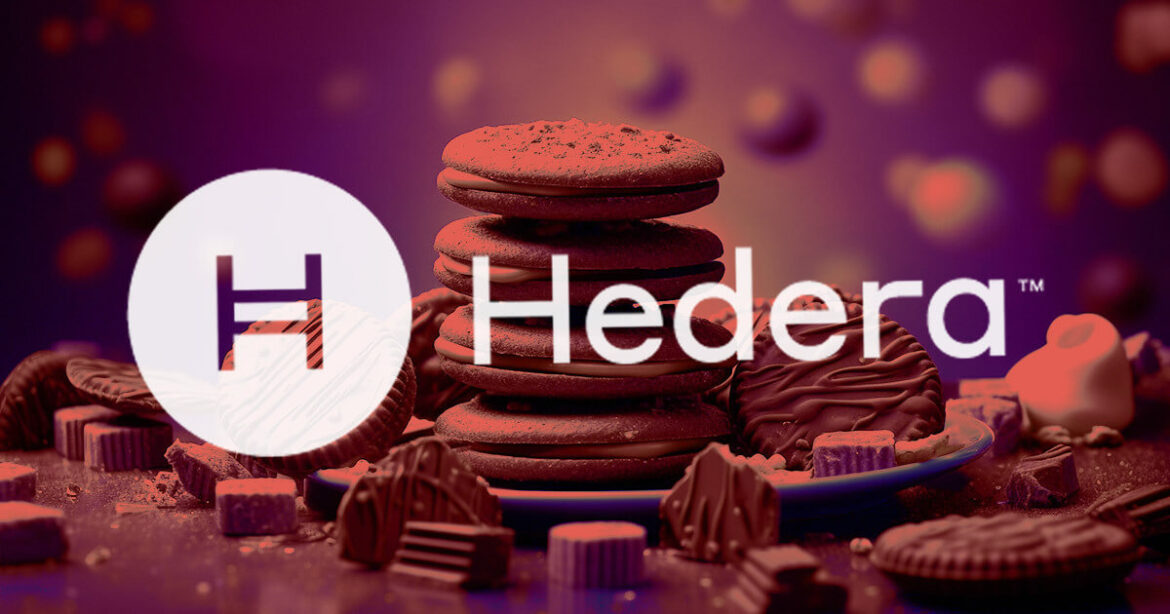
PDD’s stock powered higher Wednesday, after the China-based e-commerce company and parent of fast-fashion platform Temu reported fourth-quarter earnings that rose well above expectations, citing signs of improving consumer spending.
Source link
Parent
Oreo parent company Mondelēz International joins Hedera Council to drive DLT adoption

Mondelēz International, the global food and snacking powerhouse behind iconic brands such as Oreo, Cadbury, and Toblerone, has officially joined the Hedera Council, according to a Feb. 14 press release.
Under the partnership, Mondelēz will leverage the Hedera blockchain to enhance digital transformation, supply chain management, and customer engagement.
The Hedera Council, consisting of over 30 diversified organizations, governs the Hedera network, a public ledger designed for decentralized economic activities.
Mondelēz International’s entry into this consortium highlights its commitment to embracing digital innovation and improving business processes by adopting Web3 and DLT technologies.
Driving DLT adoption
By joining the Council, Mondelēz International aims to explore and develop DLT-based solutions on the Hedera network. The partnership will allow the company to develop initiatives to enrich the consumer experience and optimize supply chain processes.
The collaboration is poised to streamline operations and foster innovation within the company’s vast network, which spans over 80 countries and employs approximately 91,000 people worldwide.
In addition to its partnership with Hedera, Mondelēz International has initiated a collaboration with SKUx, a fintech and payments platform, to offer a digital payment option that enhances consumer offer experiences.
The venture represents the first real-world application of DLT in tracking the supply chain of consumer-packaged goods (CPG) and digital payment-based offers, setting a new standard for transparency and efficiency in the industry.
Hedera’s expanding ecosystem
In recent months, Hedera has announced several significant partnerships, including a collaboration with Hitachi America, Ltd. The alliance aims to bring Hitachi’s industrial solutions expertise into the Hedera ecosystem, promising to explore end-to-end supply chain and sustainability solutions on the DLT platform.
Hedera has also entered a $250 million partnership with the Saudi Ministry of Investment. This five-year agreement aims to catalyze the development of Web3 technologies and deep tech in Saudi Arabia by launching the DeepTech Venture Studio in Riyadh.
The initiative is expected to accelerate innovation across various sectors, including AI, blockchain, and other emerging technologies, reinforcing Saudi Arabia’s commitment to diversifying its economy and reducing its reliance on crude oil.
These collaborations will enhance Hedera’s position in the blockchain and DLT space and highlight the network’s capability to support wide-ranging applications across different industries.
Genesis’ bankruptcy plan faces pushback from parent company DCG over creditor payouts

Digital Currency Group (DCG), the parent company of the defunct crypto lender Genesis, has filed an objection against the approval of its subsidiary’s bankruptcy plan, which was created via a “clandestine approach.”
In a Feb. 5 court filing, DCG argued that Genesis’ plan aims to exceed legal obligations by overcompensating creditors. According to the firm, such action constitutes a breach of the bankruptcy code and reflects a lack of good faith.
The crypto company contends that the plan unfairly disadvantages it while eroding its fundamental economic and corporate governance privileges.
“The Debtors (Genesis), in concert with the UCC and Ad Hoc Group, have devised a cramdown plan that pays unsecured creditors hundreds of millions of dollars more than the full amount of their petition date claims—and which disproportionately favors a small controlling group of creditors over others—in violation of the Bankruptcy Code,” DCG added.
Consequently, DCG urged the court to dismiss the proposed plan, emphasizing its inability to endorse such “complex and convoluted Distribution Principles.”
Meanwhile, DCG pointed out that it was willing to “fully support a plan that provides a 100% recovery for creditors—par plus post-petition interest” if all of its concerns were met.
This is not the first time both companies have been involved in a face-off. Last year, Genesis took legal action against DCG to recoup a substantial loan exceeding $700 million, encompassing both fiat and cryptocurrency repayments slated for May 2023.
Despite DCG’s public assertion of settling the $700 million debt, a faction of the lender creditors have insisted that it remains obligated to the failed firm.
Genesis, alongside several cryptocurrency lending firms like Celsius, succumbed to the 2022 bear market turmoil. The company filed for bankruptcy in January 2023 following the suspension of withdrawals triggered by the FTX collapse in November 2022.
Since then, the lender has continued with its bankruptcy process and recently moved to liquidate $1.4 billion of its assets held in Grayscale Bitcoin Trust (GBTC), which recently converted to a spot exchange-traded fund (ETF).
Olive Garden and LongHorn parent Darden beats profit estimates but falls short on revenue

Darden Restaurants Inc.’s stock dropped 1% on Friday after the parent of Olive Garden and LongHorn Steakhouse restaurants fell slightly short of second-quarter revenue estimates while reporting a rise in profits.
The Orlando, Fla.-based restaurant operator also said its estimated 2024 same-stores sales growth of 2.5% to 3% would miss the FactSet consensus estimate for 3.1% growth.
Darden
DRI,
said its second-quarter profit rose to $212.1 million, or $1.76 a share, from $187.2 million, or $1.52 a share, in the year-ago period. Darden’s adjusted second-quarter earnings totaled $1.84 a share.
Darden beat the FactSet second-quarter consensus estimate of $1.74 a share.
Second-quarter sales rose by 9.7% to just under $2.73 billion, just short of the analyst estimate of $2.74 billion.
Chief Executive Rick Cardenas said the company continued to grow market share as it outperformed the industry on same-restaurant sales and traffic.
“The consumer still continues to appear both resilient, but a little bit more selective … and we’ve seen that for a couple of quarters,” Cardenas said, according to a transcript of the company’s quarterly call with analysts.
Looking ahead, Darden said it expects full-year 2024 adjusted earnings of $8.75 to $8.90 a share, compared with the FactSet consensus estimate of $8.82 a share.
Darden is projecting 2024 sales of approximately $11.5 billion, compared with the analyst estimate of $11.6 billion.
Darden’s chief financial officer, Rajesh Vennam, said the restaurant chain has been seeing “some softness” in checks paid by customers by about 50 basis points, but lower inflation is providing a boost of about 25 basis points.
The company is bullish on its prospects for the last two weeks of the year.
“We’re encouraged by the strong holiday bookings we’re seeing at our reservation brands,” Vennam said.
Is Meta Stock A Buy? Facebook Parent Wows With AI Glasses, Avatars And Chart Pattern
Meta Platforms (META) stock staged a dramatic turnaround last week as a ho-hum initial reaction to its Connect conference on Wednesday turned to oohs and aahs with the unveiling of its new smart glasses with a built-in AI assistant. All the excitement over artificial intelligence has yet to yield a way of monetizing its potential for consumers, but the parent of Facebook and Instagram may be onto something.
X
Meta also unveiled its new Quest 3 virtual-reality headset and an array of nifty generative AI tools to give users more reason to spend time on Facebook and Instagram. But Meta still had one more potential ace up its sleeve. On Thursday, CEO Mark Zuckerberg began to win some believers in his vision for a metaverse future with the unveiling of lifelike avatars.
After conversing with Zuckerberg as photorealistic avatars in an interview on his podcast, MIT research scientist Lex Fridman wrote that it was “one of the most incredible experiences of my life.”
“It feels like we’re in the same room,” Fridman said to Zuckerberg. “It feels like the future.”
Zuckerberg said he expects to roll out the technology over the next few years. It won’t be broadly accessible until the avatars can be produced with a two- or three-minute scan by your cell phone.
Is Meta Stock A Buy?
Meta stock has rallied 149% so far in 2023 through Friday’s close, second only to Nvidia (NVDA) in the S&P 500.
The real excitement hasn’t focused primarily on the newest flashy tech. Wall Street is mainly fired up because the Menlo Park, Calif.-based social media giant has restored confidence in its digital advertising prowess and revenue growth appears to be back in high gear. Any sign of momentum for Meta’s Reality Labs division focused on the metaverse, virtual reality and smart-glasses opportunity would be icing on the cake.
Meta stock was featured as IBD Stock Of The Day on Sept. 22. Analysts touted the Connect conference as a potential catalyst to begin a move higher that could carry through its Q3 earnings announcement in late October. Citi stood by Meta as its top internet stock pick, keeping a buy rating and 385 price target.
Meta stock is showing impressive resilience and relative strength, flashing a rare bullish pattern even as the broader stock market struggles in the face of rising interest rates.
Still, there’s some risk that growth expectations have gotten carried away. Analysts could be getting too bullish about the extent to which Meta will be able to ramp up advertising on Reels short-form videos. A consumer spending slowdown and privacy regulation also could be near-term headwinds.
Quest 3
Meta said its Quest 3 virtual-reality headset, which is 40% thinner than its predecessor, will go on sale on Oct. 10. The base model with 128 gigabytes of storage will cost $500, as announced on June 1. The new detail is that a 512-GB model will be available for $650. CEO Mark Zuckerberg also announced that Microsoft’sMSFT Xbox Cloud Gaming service will available to Quest 3 users.
Beyond virtual reality, the Quest 3 also lets users “interact with virtual content and the physical world simultaneously,” offering a “mixed reality” experience. That could mean playing a virtual game on your kitchen table or visualizing virtual art on your living room walls.
The Quest 3 will compete with Apple‘s (AAPL) Vision Pro, set for release in early 2024, though at a much lower price point. The Vision Pro is expected to retail for $3,499.
Ray-Ban Smart Glasses
Still, the big surprise was Meta’s announced update of its Ray-Ban smart glasses, built in partnership with EssilorLuxottica (ESLOY). The glasses will be available for $299 starting Oct. 17.
The new version will be able to livestream video to Facebook or Instagram from the perspective of the wearer. The glasses will also come with an AI assistant that can answer questions on the fly. But that capability will become much more interesting next year when Zuckerberg said a free software update will enable the AI assistant to see what you’re seeing.
“If you want to know what the building is that you’re standing in front of, or if you want to translate a sign that’s in front of you to know what it’s saying, or if you need help fixing this sad leaky faucet, you can basically just talk to Meta AI and look at it and it’ll walk you through it step by step.”
“There are 1 billion or 2 billion people who have glasses today. I think in the future, they’re all going to be smart glasses,” essentially wearable computers, Zuckerberg predicted on the Q2 earnings call.
Still, Meta’s Reality Labs division lost $3.7 billion in Q2. At the time, the company said it expects year-over-year losses to rise in 2023 and to grow “meaningfully” again in 2024.
Catch The Next Big Winning Stock With MarketSmith
Generative AI Tools
Meta announced 28 AI chatbots, which are similar to ChatGPT, but which have distinct personalities, is also expected to unveil several generative AI chatbots with personalities, including Snoop Dogg and Tom Brady. Even cooler, Zuckerberg showed off soon-to-be-available generative AI editing tools that can alter photos for sharing. In one example, AI turned an image of his dog into an origami look-alike version.
The hope is that such tools will increase engagement. Still, it remains to be seen whether there will be much of a payoff in revenue and profits from general-purpose chatbots that are free to use. Generative AI operating costs are much higher than regular search.
However, Zuckerberg is optimistic that generative AI can help unlock the potential to monetize business messaging, a key growth area for Meta. Click-to-message ads, which open up a WhatsApp or Messenger chat with businesses, have reached a $10-billion annual rate, Zuckerberg said on the Feb. 1 earnings call. In the latest call, he noted that the number of businesses using paid messaging products has doubled from a year ago.
One of the biggest issues limiting monetization of business messaging is that “it’s quite human labor-intensive,” Zuckerberg said. That’s why Meta’s click-to-message ads have only taken off where the cost of labor is relatively low. But in a world where every business has an AI agent, “the kind of success that we’re seeing in Thailand or Vietnam with business messaging could kind of spread everywhere,” he said.
Meta Earnings And Outlook
On July 26, Meta reported Q2 earnings of $2.98 a share on sales of $32 billion in the June quarter, topping expectations. Meta earnings increased 21%, breaking a six-quarter streak of declines. Sales advanced 11%, a second straight quarter of growth.
The results reflected continued user growth in all regions. The number of people using at least one Meta app on a daily basis rose to 3.07 billion from 3.02 billion in Q1. That includes Facebook, Instagram, Messenger and WhatsApp. Facebook daily active users rose to 2.064 billion from 2.037 billion overall. In the U.S., 202 million people used Facebook on a daily basis, up from 200 million in Q1.
For the third quarter, Meta predicted revenue of $32 billion to $34.5 billion, growing by a range of 15.5% to 24.5%. The midpoint of $33.25 billion was well above Wall Street’s prediction of $31.22 billion. Now analysts expect Q3 sales of $33.4 billion, according to FactSet.
Reels Monetization
Meta said Reels ads hit an annual run rate of over $10 billion in Q2, up from $1 billion a year earlier. The massive jump came as the number of short-form videos played across Facebook and Instagram reached 200 billion per day. That’s up more than 40% from 140 billion last fall.
In a bid to compete against TikTok, Meta programmed its AI discovery engine to prioritize Reels videos in content recommended to users. So time spent watching Reels videos subtracts to an extent from other activity on Facebook and Instagram. Still, Meta says that part of Reels growth reflects “incremental engagement.” That means that it is a net contributor to overall time spent on Meta’s apps.
Meta also needed time to figure out how to optimize Reels ads following its 2020 launch. It had been running a lot of ad-free content. Now, the rising ad load on Reels has provided a one-time jump in ad sales.
But how much more can that ad load grow? Citi analyst Ronald Josey says his firm’s tracking shows the ad load on Reels growing to 19% in Q3 from 17% in Q2. That means 19% of the content a user sees is now advertising.
In a Sept. 7 research note, Morgan Stanley analysts said they see a path for $25 billion in Reels revenue in 2024. They note that Reels now derives average revenue per user that is only 28% of what other Meta content brings in. But they see potential for that to rise to 44% next year.
The Morgan Stanley analysts, who have a 375 target on Meta stock, forecast 2024 EPS of $18.50 a share, well above the $16.85 average estimate.
Meta Regains Its Competitive Edge
A big part of Meta’s turnaround story involves overcoming the industry upheaval caused by Apple’s privacy change. Starting with the iOS 14.5 update in the spring of 2021, Apple began requiring apps downloaded through the App Store to let users opt in or out of tracking their activity across third-party sites. With the bulk of users opting out, Meta lost the data needed to help businesses narrowly target advertising to consumers likely to have an interest in their products or services.
In February 2022, Meta revealed just how big of a revenue hit Apple’s privacy shift would deliver, $10 billion in 2022 alone, amounting to about $2.5 billion per quarter.
The good news is that Meta seems to have come a long way in rebuilding its advertising edge. It did it partly by substituting user data with AI machine learning and automation.
Insider Intelligence estimates that Meta properties account for 42% of total time spent on social media by U.S. adults, but the company soaks up an estimated 75% of social media ad dollars.
Meanwhile, an important part of the Meta growth story is the ongoing shift to digital advertising. Those ads grew 5.5% from a year earlier in Q2 vs. 2% for the ad market across all media, according to a July 13 Deutsche Bank note.
Join IBD Live And Learn Top Chart-Reading And Trading Techniques From The Pros
Meta Headwinds?
CFO Susan Li noted that revenue declined 4.5% in last year’s third quarter. “We’re really lapping a much-weaker demand period a year ago.”
Li credited “improvement in the macroeconomic landscape” as a big factor in Q3 guidance. She highlighted “stabilization” in key advertiser segments like online commerce and gaming.
Since then, interest rates and gas prices have surged and consumers have begun repaying federal student loans. Consumer spending on discretionary purchases will likely slow in the U.S. in Q4, while chances of recession are rising in Europe.
Regulation is the other main worry. The European Union hit Meta with a $1.3 billion fine in Q2 for violating its General Data Protection Regulation by transmitting data on EU citizens to the U.S.
To get in compliance, Meta said on Aug. 1 that it would send a prompt to EU users in coming months. The prompt will give them a chance to opt out of seeing advertisements based on their online behavior. Now Meta also is reportedly considering ad-free, subscription-based versions of Facebook and Instagram for the EU.
Meta management may comment on the revenue implications in the Q3 earnings call next month.
Meta Stock
In Friday stock market action, Meta stock dipped 1.2% to 300.21, trading as high as 310.64 before succumbing to the broad market reversal.
After regaining its 50-day moving average on Thursday, Meta stock finished a hair below the key technical level (though a hair above its 10-week moving average). That’s not too bad, considering Meta had fallen as low as 286.79 intraday on Wednesday during Zuckerberg’s Connect presentation, before a spark — likely from unveiling of the AI glasses — was lit.
For the week, Meta stock finished up 0.4%. That makes four straight weeks in which Meta stock has closed up or down less than 1%.
The upshot: Meta has etched out a 5-weeks-tight pattern with a 312.87 buy point.
Meta stock also sports a 326.20 buy point from a 9-week consolidation, according to MarketSmith analysis.
The 5-weeks-tight pattern isn’t picture-perfect. Volume hasn’t been as quiet as one might like. But another feature of Meta’s chart reinforces a positive view.
Meta’s relative strength line has been trending higher for several weeks and just eclipsed July’s 52-week high. The RS line, the blue line in the chart above, tracks a stock’s performance vs. the S&P 500 index.
The RS line has been rising in large part because the stock market is in a correction, raising the risk for any new buy.
At the moment, investors should mostly be on the sidelines. Be sure to read IBD’s The Big Picture every day to stay in sync with the market direction and what it means for your trading decisions.
Meta stock is part of the IBD Leaderboard portfolio of elite stocks, which initiated a position in March as Meta broke out of a short, flat base with a 197.16 buy point. Meta also is part of the flagship IBD 50 list of leading growth stocks.
Bottom Line: If the stock market can find its footing, Meta looks poised to lead the way higher. While caution is advised given the market backdrop, Meta stock is near a buy point, but not yet a buy.
YOU MAY ALSO LIKE:
Why This IBD Tool Simplifies The Search For Top Stocks
These Are The Best Growth Stocks To Buy And Watch
Join IBD Live Each Morning For Stock Tips Before The Open
IBD Digital: Unlock IBD’s Premium Stock Lists, Tools And Analysis Today




